As the genome sequencing technologies progress, and the costs per genome sequenced go down, the number of genomes sequenced increases. So far, several hundreds of genomes have been sequenced, with many more on their way. Now, the first lizard genome has been sequenced. The genome of the green anole (Anolis carolinensis) is the first non-bird reptile genome sequenced, and, as such, an important ‘gap’ in the vertebrate genome record is beginning to be filled.
Already, some interesting observations have been made.
Firstly, anoles appear to have a lot of transposable elements (stretches of DNA that can copy and paste themselves throughout the genome). Close to a hundred of these elements show similarity with non-coding elements in the human genome, suggesting that these transposons have evolved into functional non-coding elements in the human genome.
Secondly, the genome of the green anole has greatly helped in understanding the anole lizard radiation on islands in the Greater Antilles (these lizards are often compared to Darwin’s finches). Turns out that the adaptation to different habitats happened independently on each island, resulting in very similar lizard species (see figure 1).
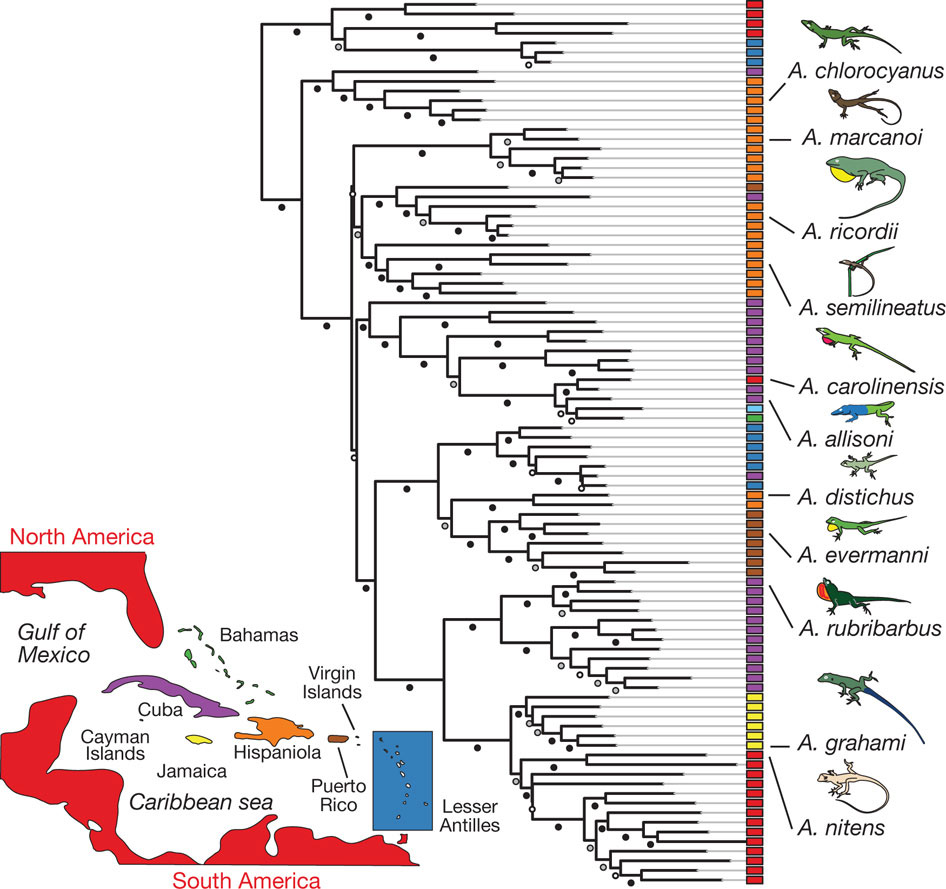
Figure 1: Anolis ecomorphs through convergent evolution.
(Source: Alföldi et al., 2011)
Thirdly, by looking at genes involved in egg production, the researchers were able to find that egg genes in both birds and lizards are evolving rapidly. Additionally, many genes involved in color vision were found, supporting the importance of the dewlap coloration (see figure 2).
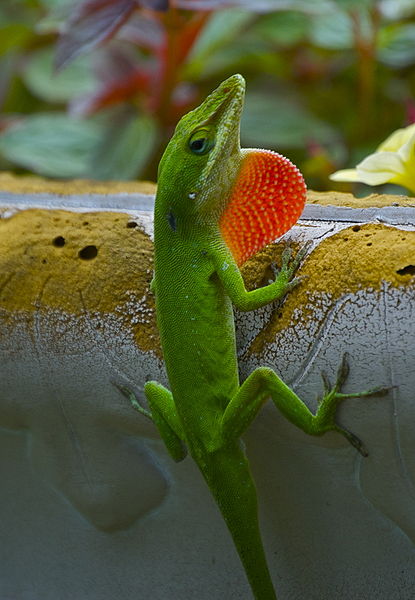
Figure 2: Green anole showing his brightly colored dewlap.
(Source: Wikimedia Commons, author: R. Colin Blenis)
Fourthly, other unusual features in the genome have been analyzed, such as microchromosomes (see figure 3) and the lack of isochores (regions with high or low concentrations of cytosine and guanine which give human chromosome their banded pattern) (see figure 4). Furthermore, the researchers have found the sex chromosomes (something researchers could only hypothesize about before), which are XX and XY, in contrast to birds, where the males have two identical sex chromosomes, ZZ, and females ZY (see figure 5). In the anole, the X chromosome turned out to be one of the microchromosomes.
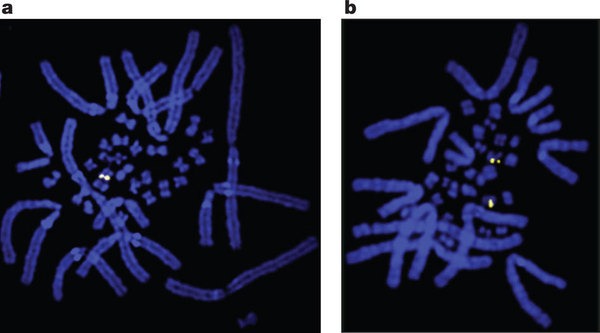
Figure 3: Microchromosome X, one copy in males (a), two in females (b)
(Source: Alföldi et al., 2011)
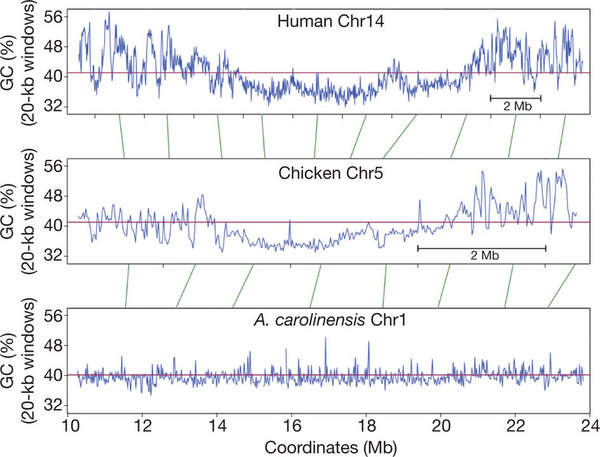
Figure 4: Lower GC content in anoles when compared to chickens and humans.
(Source: Alföldi et al., 2011)
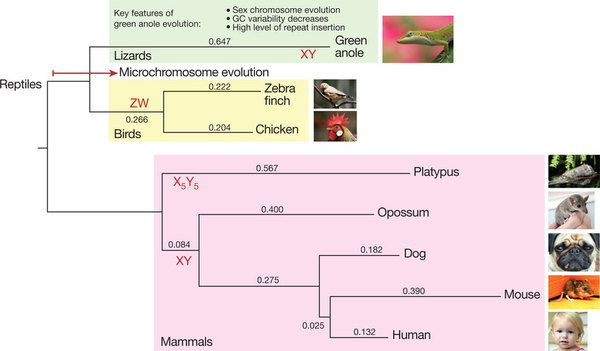
Figure 5: Amniote phylogeny showing major features of amniote evolution.
(Source: Alföldi et al., 2011)
This study is a great collaborative effort, combining expertise in protein biology, genetics, behavioral and evolutionary biology and computational analysis. Further research is almost certain to provide interesting new insights concerning genome biology and evolution.
Reference
Alföldi, J.; Di Palma, F.; Grabherr, M.; Williams, C.; Kong, L.; Mauceli, E.; Russell,P.; Lowe, C.B.; Glor, R.E.; Jaffe, J.D.; Ray, D.A.; Boissinot, S.; Shedlock,A.M.; Botka, C.; Castoe, T.A.; Colbourne, J.K.; Fujita, M.K.; Moreno, R.G.; ten Hallers, B.F.; Hausler, D.; Heger, A.; Heiman, D.; Janes, D.E.; Johnson, J.; de Jong, P.J.; Koriabine, M.Y.; Lara, M.; Novick, P.A.; Organ, C.L.; Peach, S.E.; Poe, S.; Pollock, D.D.; de Quieroz, K.; Sanger,T.; Searle, S.; Smith, J.D.; Smith, Z.; Swofford, R.; Turner-Maier, J.; Wade,J.; Young, S.; Zadissa, A.; Edwards, S.V.; Glenn, T.C.; Schneider, C.J.; Losos, J.B.; Lander, E.S.; Breen M.; Pontig, C.P. and Lindblad-Toh, K. (2011). The genome of the green anole lizard and a comparative analysis with birds and mammals. Nature. doi:10.1038/nature.10390. (Click here for the article)
(Kudos to Nature for the open access.)



Comments